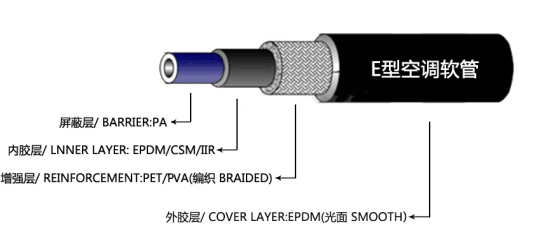Honda Power Steering Hose Replacement Guide and Tips for DIY Enthusiasts
Honda Power Steering Hose Replacement A Comprehensive Guide
The power steering system in your Honda is an essential component that ensures smooth and effortless steering. Over time, various parts of this system, particularly the power steering hose, can wear out, leading to leaks and compromised steering performance. In this article, we’ll take you through the process of replacing the power steering hose, helping you understand why it’s important and how to do it yourself if you’re comfortable with basic automotive repairs.
Why Replace the Power Steering Hose?
The power steering hose transports hydraulic fluid from the power steering pump to the steering gear. Over time, exposure to high temperatures, pressure, and road contaminants can cause the hose to weaken and eventually develop leaks. Signs of a failing power steering hose include
- Steering difficulty - A whining noise when turning the wheel - Fluid spots under the car - Loss of power steering fluid
Ignoring these signs can lead to more severe damage to your power steering system, potentially resulting in expensive repairs. Therefore, it’s critical to address any issues with the power steering hose promptly.
Tools and Materials Required
Before you start with the replacement, ensure you have the following tools and materials
- New power steering hose - Wrenches (specific sizes may vary) - Screwdrivers (flathead and Phillips) - Fluid catch pan - Power steering fluid - Pliers - Rags - Safety goggles and gloves
Step-by-Step Guide to Replacing the Power Steering Hose
1. Safety First Start by parking your Honda on a flat surface and engage the parking brake. Make sure the engine is turned off and cool before beginning any repairs. Wear safety goggles and gloves to protect yourself.
honda power steering hose replacement

2. Locate the Power Steering Hose Open the hood and locate the power steering pump and the associated hose. Generally, the power steering pump is connected to the engine and the hose runs to the steering gear.
3. Drain the Power Steering Fluid Place a fluid catch pan under the power steering pump and hose. Loosen the clamp securing the hose using pliers or a screwdriver, and gently detach the hose. Allow the fluid to drain into the pan—it’s important to dispose of the old fluid appropriately.
4. Remove the Old Hose Once drained, fully remove the old hose by loosening any additional clamps or fasteners securing it in place. Take note of how the hose is routed, as you'll need to replicate this with the new hose.
5. Install the New Hose Carefully position the new power steering hose, following the same routing as the old one. Secure it in place with the clamps or fasteners, making sure it is tight enough to prevent leaks but not overly tight, which could damage the hose.
6. Reconnect the Power Steering Pump Reattach the hose to the power steering pump. Ensure that all connections are secure and there are no kinks in the hose.
7. Refill Power Steering Fluid The next step is to refill the power steering fluid. Check your owner’s manual for the correct type of fluid and the appropriate fill level. Pour the new fluid into the power steering reservoir.
8. Bleed the Power Steering System Once the fluid is filled, start the engine and turn the steering wheel from lock to lock several times. This action helps to bleed any air that may have entered the system and ensures that the fluid is circulating properly.
9. Check for Leaks After bleeding, inspect the hose connections for any signs of leaks. If everything looks good, replace the cap on the reservoir.
10. Test Drive Your Honda Take your car for a short test drive to ensure that the steering feels normal and there are no unusual sounds or sensations. Keep an eye on the power steering fluid level for the next few days, adding more if necessary.
Conclusion
Replacing the power steering hose in your Honda may seem daunting, but with the right tools and a methodical approach, it’s a manageable DIY project. Regular maintenance of your power steering system not only enhances your driving experience but also saves you money in the long run. If you encounter any issues beyond the hose replacement, don’t hesitate to consult a professional mechanic for assistance. Safe driving!
-
Ultimate Spiral Protection for Hoses & CablesNewsJun.26,2025
-
The Ultimate Quick-Connect Solutions for Every NeedNewsJun.26,2025
-
SAE J1401 Brake Hose: Reliable Choice for Safe BrakingNewsJun.26,2025
-
Reliable J2064 A/C Hoses for Real-World Cooling NeedsNewsJun.26,2025
-
Heavy-Duty Sewer Jetting Hoses Built to LastNewsJun.26,2025
-
Fix Power Steering Tube Leaks Fast – Durable & Affordable SolutionNewsJun.26,2025

